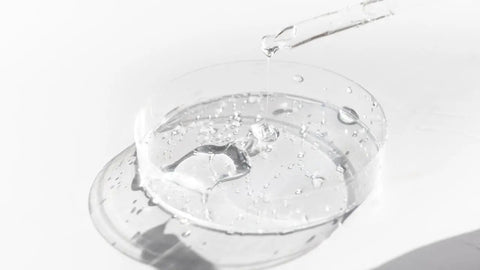Introduction
Are you struggling with skin that feels tight, flaky, or dull? Understanding the difference between dry skin and dehydrated skin is crucial to choosing the right treatments. While these two conditions share some similarities, they have distinct causes and require different approaches for effective treatment. In this article, we’ll break down the key differences between dry and dehydrated skin, help you identify which one you have, and share the best tips for treating both types to keep your skin healthy and glowing year-round.
What is Dry Skin?
Dry skin is a skin type characterized by a lack of natural oils or sebum. This condition is often inherited, and the skin feels rough, tight, and may flake. Cold weather, harsh skincare products, or environmental factors can exacerbate dry skin, but it’s generally a permanent condition that requires long-term care.
Key Signs of Dry Skin:
- Flaky, rough texture
- Tightness, especially after washing
- Redness or irritation
- Cracks or visible patches of dryness
People with dry skin typically experience a lack of moisture retention, leading to increased sensitivity. It’s essential to moisturize regularly and focus on products that restore lipids and support the skin's protective barrier.
How to Treat Dry Skin:
To address dry skin, focus on using rich, hydrating products that contain emollient ingredients like Hyaluronic Acid, Ceramides, and Vitamin E. These ingredients help lock in moisture and restore balance to the skin.
Here are some key steps for treating dry skin:
- Use a gentle, non-stripping cleanser to avoid further dehydration.
- Look for moisturizing creams and oils to lock in moisture throughout the day.
- Choose products designed for dry skin that specifically target oil production and moisture retention.
What is Dehydrated Skin?
Dehydrated skin, on the other hand, refers to a condition where your skin lacks water, not oil. It can affect any skin type—whether oily, normal, or dry—and occurs when the skin’s water content is low. External factors like weather, dehydration, or the overuse of harsh skincare ingredients can trigger dehydration.
Key Signs of Dehydrated Skin:
- Dull complexion
- Fine lines or wrinkles becoming more visible
- Skin feels tight and sensitive, especially after cleansing
- Excess oil production due to compensating for lack of water
How to Treat Dehydrated Skin:
For dehydrated skin, hydration is key. This means using products that can deliver moisture directly into the skin. Ingredients like Aloe Vera, Glycerin, and Hyaluronic Acid are excellent choices for replenishing lost water and restoring hydration.
Here’s how to care for dehydrated skin:
- Hydrate regularly by drinking plenty of water and using water-based moisturizers.
- Opt for lightweight hydrating serums that attract water to the skin’s surface.
- Avoid harsh exfoliants that could further strip your skin of its moisture.
Dry Skin vs. Dehydrated Skin: Key Differences
Although dry skin and dehydrated skin may look similar, the causes and solutions are different. Here’s a simple comparison to help you understand how they differ:
| Dry Skin | Dehydrated Skin |
|---|
| A skin type that lacks oil | A condition caused by lack of water |
| Appears flaky, rough, or patchy | Dull, tired, and more prone to fine lines |
| Needs products that restore oil | Needs products that boost hydration |
| Often permanent, but manageable | Temporary and treatable with hydration |
How to Prevent and Care for Both Dry and Dehydrated Skin
Whether you struggle with dry skin or dehydrated skin, it’s important to take preventive measures to keep your skin balanced and hydrated.
- Hydrate Inside and Out: Drinking water throughout the day will help your skin retain moisture. Pair this with products designed to hydrate dry skin and restore water balance.
- Use the Right Products: Select products based on your skin's needs. For dry skin, opt for thick, nourishing creams. For dehydrated skin, reach for lightweight serums and moisturizers packed with hydrating ingredients.
- Sun Protection: Always apply sunscreen to protect the skin's natural barrier, as sun exposure can exacerbate both dry and dehydrated skin.
Question:
What’s the difference between dry skin and dehydrated skin?
Answer:
Dry skin is a skin type characterized by a lack of oil, causing it to appear flaky and rough. Dehydrated skin, on the other hand, lacks water, making it appear dull and increasing the visibility of fine lines. While dry skin needs oil-based products to restore moisture, dehydrated skin requires hydration-focused ingredients to replenish lost water.
Conclusion
Understanding the difference between dry skin and dehydrated skin is crucial for effective skincare. By using the right products and following a proper routine, you can manage and treat both conditions effectively. Remember to keep your skin hydrated, choose the right ingredients, and protect your skin barrier for healthy, glowing skin year-round. Whether you need solutions for dry skin or hydration for dehydrated skin, we've got you covered with tips that work!





Comments (0)
There are no comments for this article. Be the first one to leave a message!